Learning when to apply hot and cold therapy to injuries can be tricky. Cold therapy provides relief from pain, inflammation, and swelling. Heat therapy, on the other hand, helps muscles relax and improves range of motion. But what about using hot and cold therapy together?
This technique of applying hot and cold therapy at the same time is known as contrast therapy or alternating hot and cold therapy. It involves alternating applications of high and low temperatures for natural pain relief. Alternative hot and cold therapy is especially beneficial when applied a few days after acute injuries. Before applying contrast hydrotherapy, make sure the bleeding has stopped and there are no signs of inflammation.
How Hot and Cold Therapy Works-
Working Mechanism of Cold Therapy-
The use of very cold temperatures or ice is known as cryotherapy or cold therapy. Cold therapy works on the Pain Gate Theory principle (blocks pain signals to the brain) and Vasoconstriction (narrowing the blood vessels). When muscles contract, the metabolism rate is reduced. This, in turn, reduces the oxygen requirement of cells. This helps lower the pain associated with inflammation.
Working Mechanism of Heat Therapy-
Heat therapy works on the principle of vasodilator. It increases blood circulation by expanding the blood vessels. This helps muscles relax, reduces pain, and relieves cramping. Increased blood circulation also induces more oxygen in the blood and draws nutrients to the injured area while carbon dioxide and metabolic waste are purged.
Benefits of Alternating Ice and Heat Therapy-
Both ice and heat help alleviate the pain, soothe the injured area, and promote the natural healing process. Sometimes, it is required to apply them simultaneously for long-lasting pain relief. Contrast therapy helps reduce inflammation, stimulate circulation, and relaxes tight muscles, thereby easing pain. Alternating Hot and Cold therapy helps relieve pain and swelling associated with a variety of injuries. It’s most effective in treating pain in the hands and lower body. Contrast hot/cold therapy provides a natural pain relief remedy from strains and sprains of the foot, ankle, elbow, knee, wrist, neck, shoulder, muscle spasms, and joint aches.
-
Hot/Cold Therapy is Drug-Free
Cold therapy is free of NSAID medication. It is a natural pain relief remedy safer than oral painkillers and doesn’t cause complications like addiction, drug overdose, or other harmful side effects.
-
Hot/Cold Therapy on All Inflammation-Related Ailments
Exposure to cold temperatures during hot/cold therapy raises adiponectin levels in the body, making cold therapy an effective technique for treating all major inflammation-related ailments. It is highly effective in providing pain relief to fibromyalgia, tendonitis, rheumatoid arthritis, osteoarthritis, multiple sclerosis, autoimmune disorders, spondylitis, psoriasis, dermatitis, plantar fasciitis, sciatica, and osteoporosis. Patients can use heat therapy for joint stiffness and cold therapy for swelling and acute pain.
-
Hot/Cold Therapy is Self Care & On-the-Go Treatment
Hot/cold therapy is an easy, safe and effective pain relief home remedy. The huge advantage of this self-care technique is that you can be independent and active while healing your body. Topical pain relievers are an alternative method to apply contrast hot/cold therapy.
-
Hot/Cold Therapy is Beneficial for Kids
Hot/Cold Therapy is a safe, non-invasive, and drug-free treatment for sports-related injuries for adults and kids alike. It reduces inflammation in muscles and joints and improves body metabolism, immunity, stamina, mobility, and flexibility. On May 2, 2016, the NJSIAA (New Jersey Interscholastic Athletic Association) recommended non-medication treatments like cold therapy over prescription drugs for children. Hot/Cold Therapy is the preferred treatment method for children with special needs.
-
Hot/Cold therapy helps recover from Sports Injury.
Athletes use heat therapy to relax and stretch muscles before a workout and use cold therapy after training to lower inflammation and pain. Alternating hot and cold therapy helps recovery by reducing levels of both lactic acid and muscle soreness. Contrast hot/cold therapy is beneficial for sports injuries such as tennis elbow, shin splints, and runners knee.
Alternating Hot and Cold Therapy Application Methods
There are several ways to apply alternative hot and cold therapy to the body. Generally, it is done through local applications (for small areas of pain) or total body immersion (widespread pain or stiffness).
Local applications for Contrast Hot and Cold Therapy-
Heat Wraps and Ice Packs-
Hot and cold packs work best when alternating heat and ice for neck pain and injuries of the wrists, forearms, knees, face, and other smaller body parts.
Cold/Hot Spray or Shower-
Spraying a stream of water from a faucet, shower head, or hose on the injured body part is the simplest way of delivering contrast therapy. Another method is to pour water from hot and cold buckets directly on the affected area, but this requires you to refill the bucket each time quickly.
A detachable showerhead or hose offers a better application of contrast therapy since it can reach any part of the body with relative ease and provide targeted therapy. You can use a faucet to deliver contrast therapy to the feet, hands, forearms, or elbows.
Regional Applications for Contrast Hot and Cold Therapy-
Soak your injured ankles, lower legs, hands, wrists, or elbows in a bucket, sink, or bathtub of hot or cold water for pain relief. You can also easily switch between hot and cold therapy. Regional application of contrast therapy is effective for body parts such as sprained ankles. However, it is difficult to apply on shoulders or areas that are difficult to immerse in a water bucket.
Full Body Applications for Contrast Hot and Cold Therapy-
Moving back and forth between a bath of cold water and a tub of hot water can help a speedy recovery. Full-body immersion can also be applied via sauna or pool.
Full body applications such as hot/cold showers are better for overall health than treating an injury. The temperature required during contrast therapy is too high and intense for the entire body to tolerate to treat an injury. You can contrast hot/cold showers for health benefits such as improving blood circulation, getting radiant skin, enhancing stress tolerance, and boosting the immune system.
Full-body immersions can be exhausting and risky, especially for elders or people with health conditions such as heart disease or high/low blood pressure. It is best to stick to local applications of hot and cold therapy. Remember to consult your physical therapist before opting for full-body immersion therapy.
How to Apply Alternating Hot and Cold Therapy
The general rule of thumb to apply alternating hot and cold therapy is 1 minute of cold therapy for every 3 to 4 minutes of heat therapy. Repeat the transition between hot and cold therapy approximately 3 times.
It is recommended to begin and end the session with cold therapy to suppress inflammation. Topical pain relief products work on the principle of contrast hot and cold therapy. The topical application first cools the skin to minimize the pain and then applies heat to relax the muscles.
Apply Hot and cold therapy 2 times each day until the injury has healed. If the injury shows no sign of healing within two to three days, consult your doctor.
7 Tips for Alternating Ice and Heat Therapy
The tips and tricks of applying alternating heat and cold therapy can promote faster healing and quick pain relief.
- Cover your skin-Apply a barrier between your skin and cold therapy system/ ice pack. It can be a layer of thin cloth or gauge. This would help prevent accidental ice burns.
- Stay hydrated-Quick temperature changes during contrast could lead to dehydration. Make sure to drink plenty of water before and after the hot/cold treatment.
- Upgrade the intensity-Slightly increase the intensity of the hot and cold therapies with successive transitions. This depends on the delivery system you choose. Hot and Cold therapy systems are perfect since they allow you to increase or decrease the temperatures depending on your comfort level.
- Stretching Exercise-Stretch your muscles during heat therapy turns to increase muscle flexibility and range of motion.
- Consistent Heat-During alternating hot and cold therapy, make sure to apply proper heat to the injured area. Most often, heating packs cool quickly. Make sure to apply consistent heat or increase the duration of heat therapy by a minute or two.
- Begin and Finish with cold. Always begin and end with cold therapy. Finishing with heat therapy can exacerbate inflammation and swelling.
- Consider Topical Treatment-If hot/cold therapy systems or pads causes you discomfort or if you prefer to be mobile during treatments, consider Topical gel, spray, or roll-ons.
When to Avoid Alternating Heat and Cold Therapy
Avoid contrast hot/cold therapy if you have:
- Sensory disorders- There is an increased risk of accidental burns while applying hot/cold therapy in people with sensory disorders or Peripheral neuropathy/diabetic neuropathy.
- Acute injury- Acute injuries are defined as injuries that have occurred during the last two or three days due to fall, twisting movement, or direct blow. You should not treat acute injuries with heat therapy or contrast therapy due to the negative effect of heat on inflammation. Cold therapy is best to treat pain and inflammation resulting from such injuries. Once there are no signs of inflammation, contrast therapy can be applied.
- Open Wounds and skin cuts- The alternating heat and cold therapy may cause bleeding or increase infection risk in those with burns, boils, cysts, cuts, scrapes, or sunburn.
- Circulatory Disorders- Extreme hot and cold temperatures may harm those with heart issues, low blood pressure, and poor blood circulation.
- Cold Urticaria- After exposure to cold therapy, hives may form on the skin of people suffering from Cold Urticaria.
- Infection- Heat therapy leads to an increase in blood flow and might increase the risk of spreading the infection to other body parts.
Apart from the above conditions, several other medical conditions prevent the use of hot/cold therapy, such as Raynaud’s syndrome, multiple sclerosis (MS), deep vein thrombosis DVT, malignant tumors, diabetes, and dermatitis. It is always recommended to consult your doctor before using hot and cold therapy. Stop the contrast hot/cold treatment immediately if it makes the pain or discomfort worse or develops any bruising or skin changes over the treatment course. If cold/hot treatment hasn’t helped treat your pain or injury even after multiple sessions, your doctor can suggest alternate or stronger medications.

Dr. Haseena Hamdani, MBBS, DGO, PGD Endocrinology and Diabetes (USW) is a Gynaecologist, currently practicing in Gaborone, Botswana since the last 17 years. Prior to setting up this clinic she worked in India as well as in Zambia, as a Gynaecologist and Obstetrician and was also associated with an Infertility center. She is also an online tutor for the University of South Wales.

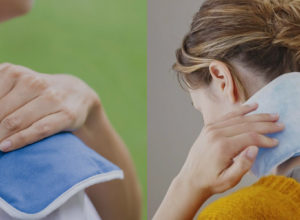





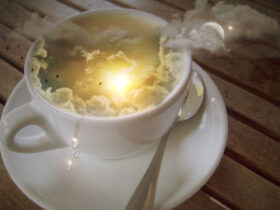



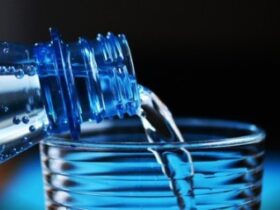
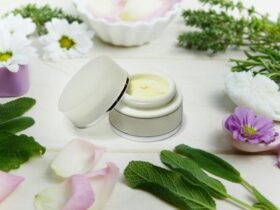
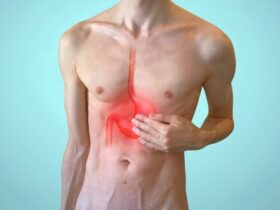
Leave a Reply